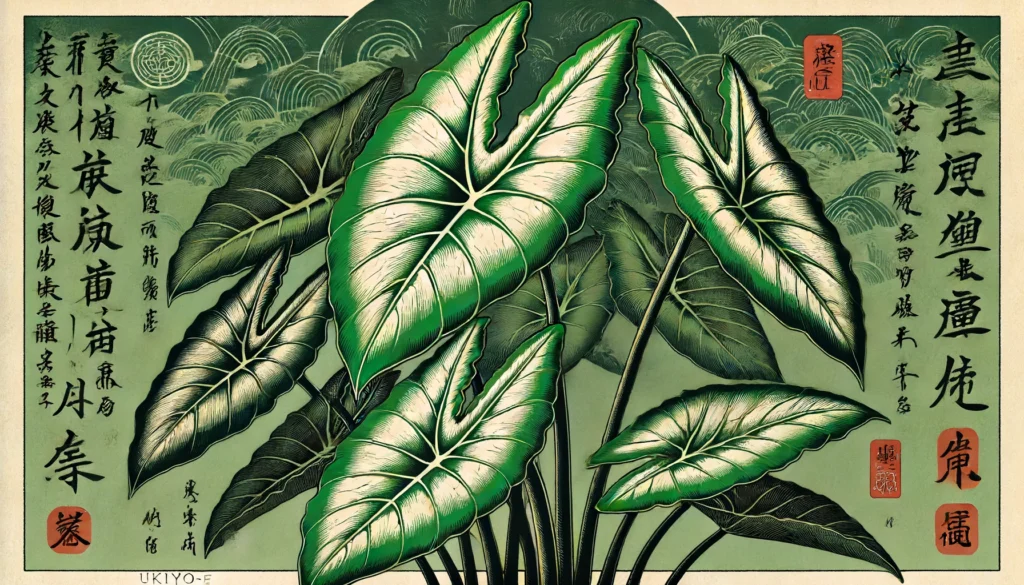

Home » Cat Plants » What Makes the Alocasia Plant Dangerous for Cats?

Alocasia, commonly known as Elephant’s Ear, is a genus of plants that are toxic to cats. These plants contain insoluble calcium oxalate crystals, which are needle-like structures that can cause irritation and injury to a cat’s mouth, tongue, and digestive system if ingested.
Alocasia plants are commonly found in tropical and subtropical regions and are popular as houseplants due to their striking foliage.
Ingestion may cause mild gastrointestinal upset, but is generally not life-threatening.
Ingestion can result in mild symptoms like vomiting, diarrhea, or drooling. Rarely fatal but may require veterinary care.
Eating these plants can lead to more pronounced symptoms like abdominal pain, lethargy, or difficulty breathing. Veterinary intervention may be necessary.
Ingesting even small amounts can cause severe symptoms like organ damage, seizures, or cardiac failure without rapid treatment.
All parts of these plants are extremely poisonous to cats and can quickly lead to death, even with immediate veterinary care.
** Please note: Please note that toxicity level can vary based on the amount ingested and the specific cat. It's always best to keep these plants completely inaccessible to cats and seek immediate veterinary care or call the poison hotline if you suspect your cat has ingested any part of a toxic plant.
If a cat ingests an Alocasia plant, it may experience various symptoms, including oral irritation, excessive drooling, vomiting, difficulty swallowing, and pawing at the mouth.
In severe cases, the cat may experience respiratory distress, lethargy, and abdominal pain. Bold symptoms include swelling of the mouth, tongue, and lips, as well as gastrointestinal issues such as diarrhea.
If you suspect your cat has ingested an Alocasia plant, it is crucial to seek veterinary attention immediately. Your veterinarian will likely perform a physical examination and may recommend diagnostic tests, such as blood work or imaging, to assess the extent of the injury and potential complications.
For more information on potential diagnoses and treatments, refer to the ASPCA Animal Poison Control Center.

A: Yes, Alocasia, commonly known as Elephant’s Ear, is toxic to cats. Ingesting any part of this plant can cause symptoms like oral irritation, excessive drooling, vomiting, and difficulty swallowing.
A: Symptoms of Alocasia poisoning in cats include oral irritation, excessive drooling, vomiting, difficulty swallowing, pawing at the mouth, respiratory distress, lethargy, abdominal pain, swelling of the mouth, tongue, and lips, and gastrointestinal issues such as diarrhea.
A: All parts of the Alocasia plant are toxic to cats due to the presence of insoluble calcium oxalate crystals.
A: If you suspect your cat has ingested an Alocasia plant, seek veterinary attention immediately. The veterinarian will likely perform a physical examination and may recommend diagnostic tests to assess the extent of the injury and potential complications.
A: Alocasia plants are not safe to keep as houseplants if you have cats. Due to their toxicity, it is best to avoid having these plants in homes with cats to prevent accidental ingestion and potential poisoning.
A: Alocasia plants are native to tropical and subtropical regions of Asia, Australia, and the Pacific Islands. They have been cultivated for centuries as ornamental plants and, in some cases, as a food source.
The Alocasia genus is native to tropical and subtropical regions of Asia, Australia, and the Pacific Islands. These plants have been cultivated for centuries as ornamental plants and, in some cases, as a food source.
The striking foliage and unique shapes of Alocasia leaves have made them popular houseplants and garden plants worldwide.Alocasia plants were first introduced to the Western world in the 19th century by plant collectors and botanists exploring the tropical regions of Asia.
Over time, various cultivars and hybrids have been developed, resulting in a wide range of leaf shapes, sizes, and colors.
Please note: The information shared in this post is for informational purposes only and should not be considered as veterinary medical advice.
🐾 A hilarious or heart-melting cat video
🐾 Our latest paws-on review of a cool cat toy